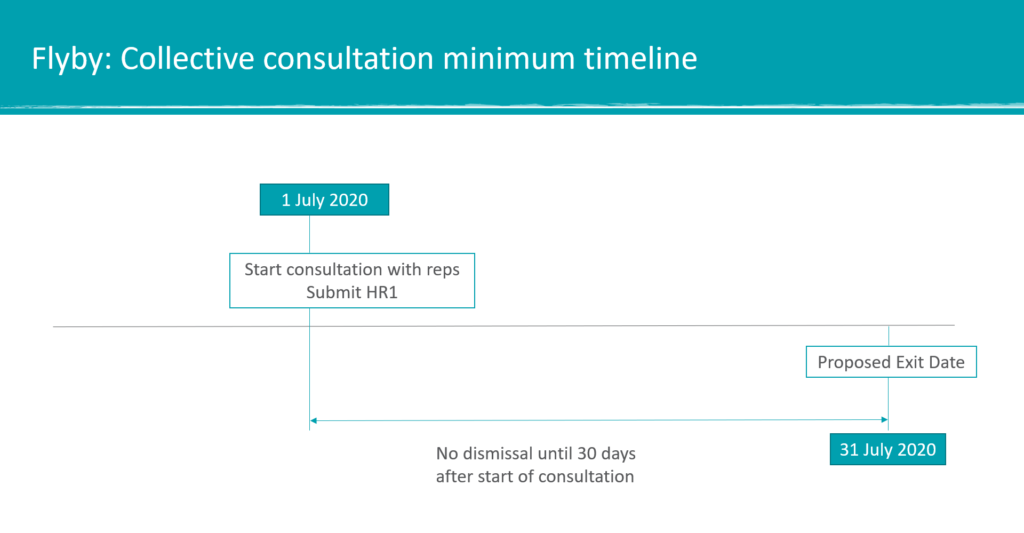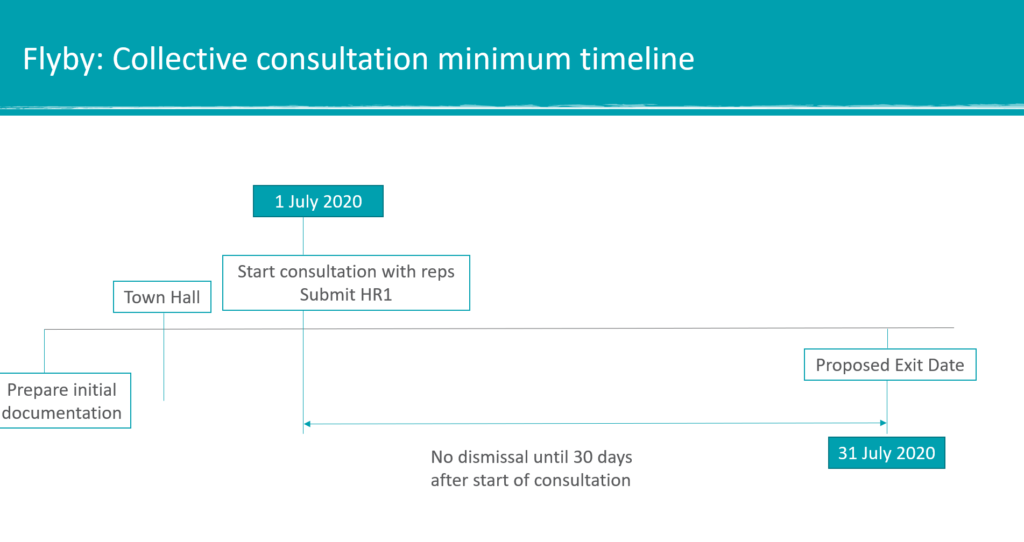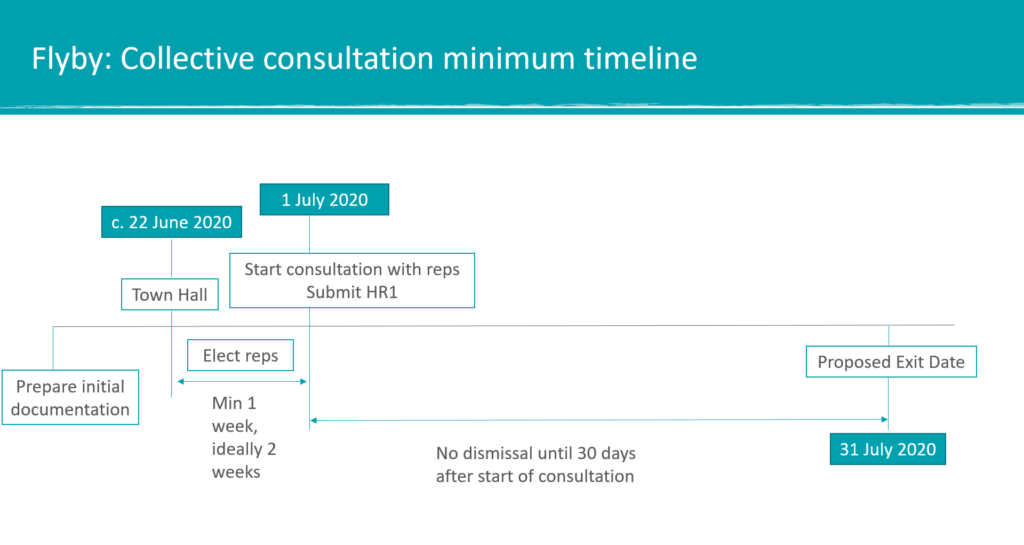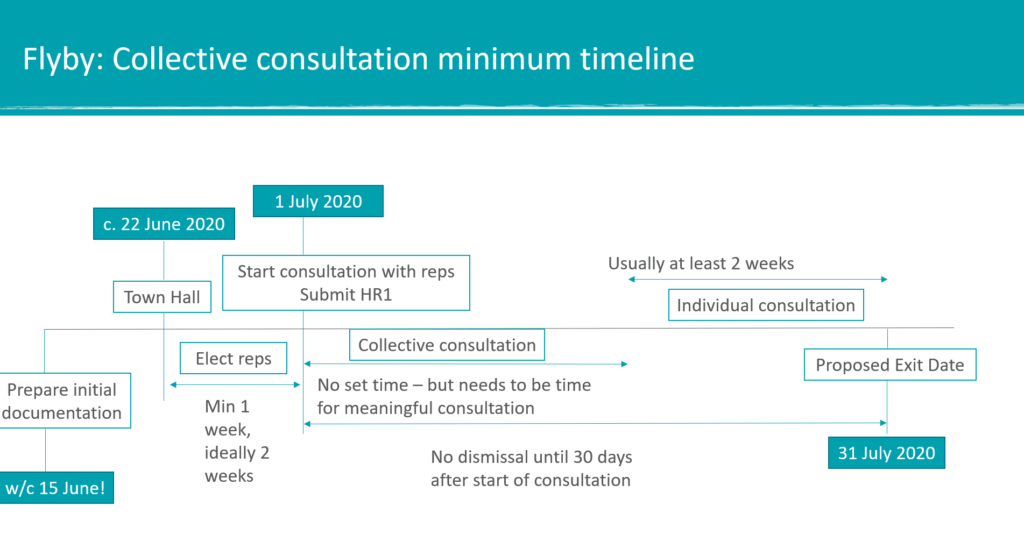Timing is often the pinch point in many large scale redundancy situations. In this article we set out when you need to do what – as simple as that.
To start, it is important to know what the ‘hard’ deadlines are. There are two:
1. Notifying the Secretary of State of proposed redundancies via a HR1 Form.
- The form must be submitted at least 30 days before the first dismissal if there are 20 – 99 redundancies, or at least 45 days before the first dismissal for 100+ redundancies.
- The risk of non-compliance is high: potential criminal penalties.
2. Collectively consulting with employee representatives about key issues.
- Employers must commence consultation in “good time” and at least 30 days before the first dismissal.
- The risk of non-compliance is also high: up to 90 days’ pay per affected employee (called a “Protective Award”).
These deadlines are important to bear in mind, although they are not the only timing considerations.
Collective consultations often involve electing representatives, they are document heavy (which requires a lot of preparation) and there are inevitable lags in the process.
To help explain the timeline we will use an example of the fictional company Flyby:
- Flyby wants to make redundancies before it is required to contribute to furlough costs on 1 August.
- This means that redundancies would need to take place on or before the 31 July.
There are 40 redundancies proposed.
Step 1: The consultation with the representatives must start at least 30 days before 31 July, and the HR1 Form must also be filed within this timeframe, which means that we need to start the consultation by 1 July.

Step 2: There are some actions which need to be taken before the consultation has begun. In particular, you usually speak with all of the affected employees at a townhall style meeting (which can be virtual) to notify them of the proposals and to start the process of electing representatives.

Step 3: Of course, to be ready for that townhall meeting you will need to have prepared initial documentation to give to the employees after the townhall to explain the proposals and to kick off the representative election process (if required) and the townhall itself will require some planning. See here for further information regarding electing reps.

Step 4: Given you will need around one to two weeks from the town hall commencing to the consultation to elect representatives, you would need to hold your town hall around 22 June.

Step 5: Presuming you will need at least one week to get input from the business and prepare the documents ahead of the townhall meeting as well as generally preparing for the process (such as deciding if and how employee reps will be elected), you actually need at least six to eight weeks to manage the process.

Step 6: Finally, you need to consult within this timeline.
There is no set time for the consultation with the representatives but you must allow enough time for there to be meaningful consultation. This will vary from business to business and will depend on several factors.
Sometimes if these processes are well-planned, and the representatives have all of the information and answers to their questions promptly, the representatives will agree there is nothing more to discuss in a couple of weeks.
However, a poorly planned process can leave employees and their representatives confused and asking lots of questions to try and understand the proposals. This will mean more meetings and time taken up for Flyby as part of the collective consultation. It may push the end date back.
After collective consultation, you will still need to undertake individual consultation with those whose roles have been provisionally selected for redundancy. This will usually take around 2 weeks.

As you can see from the above, Flyby has a tight timetable to work to and the various timings quickly add up.
We hope this brief overview has helped clarify your timing obligations. If you need more information, this timeline as well as other matters relating to collective consultations such as electing representatives, consultation and technology solutions were discussed on our webinar which can be accessed here.

